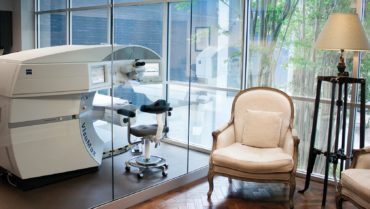
San Antonio’s Parkhurst-NuVision (PNV; www.sanantonio-lasik.com) is bucking several trends. It is succeeding as a newer startup practice. It is focused on the narrow subspecialty of refractive surgery. Its agenda embraces collaborative care with optometrists and optometry students. Finally, it is forming rewarding alliances with other refractive surgeons instead of competing with them for market share and patients. At the helm of this trendsetting practice is Gregory D. Parkhurst, MD, an energetic young surgeon who is equal parts refractive surgery enthusiast, coalition builder, and business leader.
Analyzing PNV’s components reveals what makes it a prime example of the type of practice that will thrive in the new millennium.
In the Beginning
Almost 5 years ago, an opportunity to start a new refractive surgery practice emerged (as an older one that ran into management roadblocks was in transition), and PNV was born. The Parkhurst half of the name is reflective of Dr. Parkhurst, who became immersed in refractive surgery during his residency at Walter Reed Army Medical Center and his fellowship with pioneering refractive surgeon Stephen Slade, MD. The NuVision portion of the name is derived from a large group of committed, well-established community primary eye doctors who see the value of involving themselves in an integrated eye care model. They now collaborate with Dr. Parkhurst’s practice, hence the moniker Parkhurst-NuVision.

“This is an ever-expanding group of optometric physicians that, for many years, has recognized the value that refractive surgery brings to their patients, so they have a collective commitment to presenting refractive surgery options to their patients and to working very closely with cooperative surgeons,” Dr. Parkhurst explains.
COLLABORATION
A fully integrated model of care is a win-win, Dr. Parkhurst says. “The patient gets the benefit of a long-term doctor-patient relationship that develops over years,” he comments. “The primary eye care doctor develops a deep understanding about the patient’s vision preferences and quirks that can only be learned over time, while maintaining that long-term care relationship, and to top it off, the patient gets a surgeon who’s extremely well practiced in surgery because that’s all he or she does. The patient gets this great team and ultimately benefits the most from the integrated care model.”
Dr. Parkhurst was amenable to this collaborative approach to refractive surgery because of a positive impression during his military training. “Refractive surgery is very important in the military, and for 4 years after my residency, I was heavily involved in a refractive surgery center in Texas, where I ultimately became the chief of the Refractive Surgery Department before I left,” he explains. “We had an integrated care model in the military much like the one that we have here at PNV. Surgeons did the surgery, and there were two full-time optometrists who did all the pre- and postop care. Shortly after my fellowship with Dr. Slade, I started this practice and more or less transplanted the model that we had in the military into the private practice setting. It could not have been done without the commitment and support of the leaders of the San Antonio optometric community.”
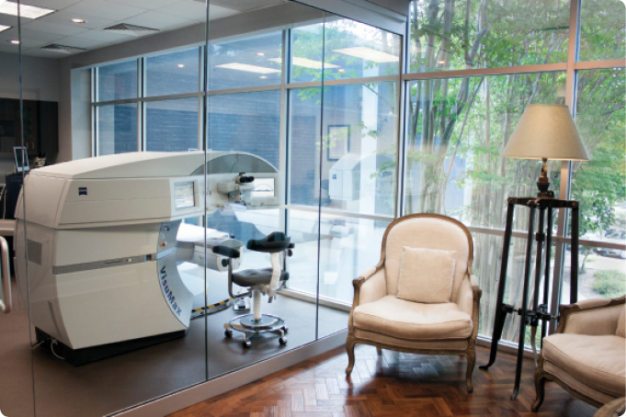
BUSINESS MODEL
PNV has a unique setup in that the private practice is housed in the same building occupied by an optometry school: Rosenberg School of Optometry at the University of the Incarnate Word (www.uiw.edu/optometry).
“Physically, we share the same building, and we share some diagnostic equipment, [but] we are a private entity, with a separate door and different branding and signage,” says Dr. Parkhurst. “The optometry students and patients pass back and forth between [the] school and practice seamlessly, and this is important because it speaks volumes about what we do in terms of collaboration with other doctors, in particular, optometrists.”
During their fourth year of studies, the optometry students participate in a month-long, in-house rotation through PNV. The model helps pave the way for a generation of optometrists who are well on their way toward fully participating in the collaborative care model upon which progressive refractive practices like PNV depend.
“The optometry school is interested in being a leader and an innovator in surgical comanagement teaching, specifically for cataract and refractive surgery, and this goes hand in hand with the aspirations of the community optometrists with whom we collaborate,” Dr. Parkhurst remarks. “The thing that is at the core of this model is that the participants have all recognized that refractive surgery isn’t about a particular procedure or a particular technology; it’s about the transformation that occurs when a person gets [his or her] eyes fixed. They want to get involved in it because they see the transformational value that refractive surgery brings to their patients.”
This rotation is mandatory for every graduating optometry student. “They’ve got a month of working in a busy surgical practice where they actually get experience treating the patients pre- and postop,” says Dr. Parkhurst. “They come out with a pretty strong grasp of how to manage refractive surgery patients. When young optometrists in training see firsthand the transformation that takes place when patients undergo refractive surgery, it’s impossible for them to ignore that when they go out and set up practice.”
LEADERSHIP AND ALLIANCES
PNV does not offer primary eye care, does not have an optical component, and does not offer retina or medical glaucoma treatment. Nor does it provide pediatric ophthalmic care. Dr. Parkhurst argues, “Even in a relatively narrowly focused specialty such as ophthalmology, you have to know what you’re not going to be just as much as what you are going to be. Then, once you pick your niche, you go for it full speed ahead. We provide every modern refractive surgery procedure there is, and we view refractive surgery as the default solution for refractive error, not the exception.”
He absorbed this philosophy from the physician CEO course he took at Northwestern University Kellogg School of Management (see Physician CEO: Physician Leadership Training). “The most important thing the Physician CEO Program helped me understand is that you can’t be all things to all people in any medical practice,” he says. “It also helped me understand effective leadership skills, the importance of brand positioning, and how to form alliances.”
Dr. Parkhurst is the current president of the Refractive Surgery Alliance (see Refractive Surgery Alliance: Sharing in the Mutual Benefits of Practice Growth), an organization dedicated to delivering the benefits of refractive surgery to more people through collaboration. “Essentially, we are refractive surgeons who gather at each other’s practices around the country—and abroad—for 3-day meetings where we analyze the host practice’s technology mix, hiring strategies, branding, and marketing techniques, and we collaborate on best practices and on how to help each other,” he explains. “We recognize that refractive surgery currently only penetrates about 5% of the potential market, and we’re working together to increase the market size for all refractive surgeons. We do this because we fundamentally believe that refractive surgery is good for patients, better and safer than other alternatives such as contact lenses, and the majority of us have either had refractive surgery and/or performed modern procedures on our own family.”1-3
WINNING FORMULA
PNV is thriving and charting an upward growth trajectory with respect to attracting new patients, referring doctors, and the number of procedures performed. According to Dr. Parkhurst, there is even a good chance that, in the not-too-distant future, his dream of opening a nearby standalone surgery center will come to fruition.
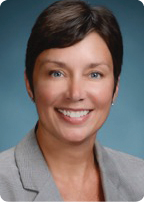
Current and projected growth called for a veteran ophthalmic surgery practice management professional to join the team to refine and reinforce policies and procedures such as staff recruitment and development. Patricia Buskirk, whose practice management consulting career spans decades, is now PNV’s chief operations officer. She says that, as she has gone from one practice to another sharing her expertise over the years, her suggestions have not always been welcome. Dr. Parkhurst, in contrast, has been eager to embrace her recommendations, she says.
“I’ve found Dr. Parkhurst to be extremely open to new and potentially better ways of doing things, even if they shake up the status quo, and I think that’s something that sets this rapidly evolving practice apart from many of the other practices that I’ve been in,” she comments. “Dr. Parkhurst is an awesome surgeon, and PNV is an excellent environment. That being said, there’s always room for improvement, and we embrace that.”
The vibe at PNV is a steady hum of positive energy that fuels the practice’s winning formula: professionals working together to attract appropriate refractive surgery candidates and educate them about the transformative capabilities of the available procedures and then enjoying the fact that they have played a role in improving people’s lives.
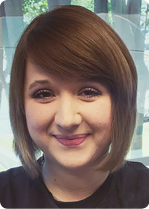
Amanda Villarreal, the practice’s marketing and social media coordinator, takes that winning formula and puts it on blast throughout the community. She and the rest of the business development and optometric liaison team use social media and community events, among other things, to build awareness of the practice and its offerings in addition to establishing a positive association with that brand.
“We do lots of things to help personalize PNV to people in the community,” Ms. Villarreal says. “Branding the practice with social media and participating in community events takes us out of our surroundings and puts us out in the public. These efforts show people that we’re not just a faceless business trying to book a surgery but instead that we are relatable and genuine individuals [whom] they can trust.”
PHYSICIAN CEO: PHYSICIAN LEADERSHIP TRAINING
Gregory D. Parkhurst, MD, says one of the best things he has done as a physician entrepreneur and owner of the San Antonio refractive surgery practice Parkhurst-NuVision is attend the Physician CEO program developed by SurgiVision Consultants in collaboration with the Kellogg School of Management at Northwestern University. Unlike other advanced degree programs that coach physicians on administrative issues, the Physician CEO program focuses on topics relevant to physician leadership, particularly around private practice and entrepreneurial ventures. The year-long course comprises four 5-day modules and course work to be completed in between modules.
“I would fly in on Saturday and attend classes and then fly back home on Wednesday,” Dr. Parkhurst recalls. “I only had to do that four times throughout the year, so I was able to participate in the program while running my practice.”
He comments, “Kellogg is one of the top business schools in the country, and they’ve created this special program that boils down the core elements of their executive MBA that are applicable to physicians, and they’ve targeted what’s needed for a physician to run his or her practice.”
For more information about the Kellogg Northwestern Physician CEO program, visit bit.ly/2rwg9Qq.
The practice participates in community events such as music festivals, where throngs of people can interact with them and ask questions about refractive surgery—or just get to know the staff—and it hosts a Facebook page, an Instagram site, a Twitter feed, and a YouTube channel. Last year, the practice staged a Mannequin Challenge, which was uploaded to YouTube and gained a healthy number of views (bit.ly/2sxlWt7). The practice has also used Facebook Live to share live refractive surgery and postoperative interviews with the patients (bit.ly/2sunuTJ).
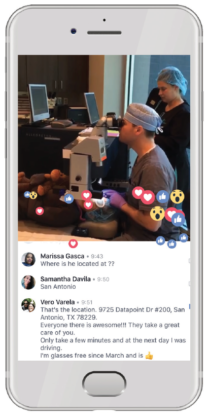
In addition, Ms. Villarreal eagerly shares that PNV was named the third-best place to work in San Antonio by a local newspaper, The SA Current. “We were one of three companies to win, alongside two of the city’s long-established and largest companies—USAA and Texas’ largest grocery store chain, both headquartered here in San Antonio. So, it was a really big deal,” she says (bit.ly/2rvQsn6).
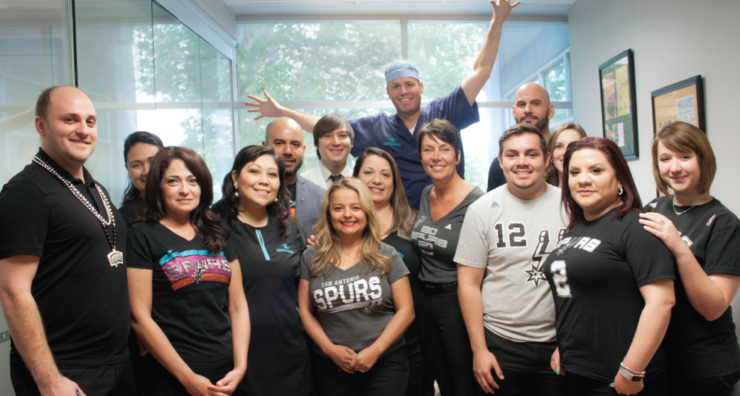
Another thing that gets PNV out of the office and into the community—albeit farther away—is its annual mission to Mexico with Surgical Eye Expeditions International. It is not the practice’s only charitable endeavor, but it is one close to Dr. Parkhurst’s heart. As it approaches every January, the mission looms large in the practice’s schedule. “The restoration of sight to a single person transforms not only his or her own life but the lives of everyone connected to that person improve as well,” he says. “Once sight is recovered, a productive life is possible again, and whoever set aside their own work or school to take care of that blind person can return to the field, market, or classroom.”
REFRACTIVE SURGERY ALLIANCE: SHARING IN THE MUTUAL BENEFITS OF PRACTICE GROWTH
Building alliances throughout the refractive surgery community is a key focus of Gregory D. Parkhurst, MD, owner and CEO of Parkhurst-NuVision in San Antonio. As the current president of The Refractive Surgery Alliance (RSA), he is committed to the group’s mission of bringing the benefits of refractive surgery to more people by growing every member’s practice through collaboration.
Dr. Parkhurst explains, “Oftentimes, in competitive markets, the thought process among refractive surgeons is, ‘let’s compete and try to get more of this small slice of the pie.’ However, looking at it from a different perspective, we see that there are not even enough refractive surgeons to serve all of the people who could benefit from refractive surgery. So instead of relying on that counterproductive model of competing for a sliver of the small piece of pie, we are working together.”
RSA focuses on refractive eye care from the perspective of the three milestones of human vision development: (1) ocular maturity, when the full-grown adult eye stops changing; (2) presbyopia; and (3) cataract.
“The beauty of it is there are refractive surgery procedures that exist now that can address each of these three milestones, so people don’t have to be dependent on glasses or contact lenses if they don’t want to be,” says Dr. Parkhurst.
RSA is committed to bringing the benefits of refractive surgery to more people through five major initiatives, all of which are well underway:
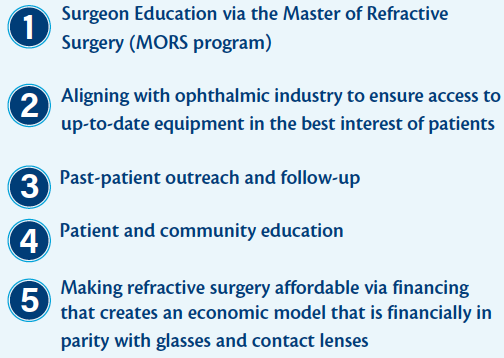
RSA is invested in initiatives that brand refractive surgery as “primary care for vision” and make refractive surgery the default solution for vision correction. “A large majority of the market chooses glasses and contacts,” says Dr. Parkhurst. “We understand that, and we’re working to change that, because it is good for patients.”
For more information about the RSA, visit bit.ly/2sHNACW.
WINNER’S CIRCLE
Collaboration, branding, community outreach, and philanthropic efforts all play a part in elevating PNV to the winner’s circle, but there are two pivotal pieces of the puzzle to which Dr. Parkhurst attributes his practice’s success.
“First, it’s our narrow focus specifically on refractive surgery,” he says. “We are the literal antithesis of the cliché Jack of all trades, master of none. We’ve identified what we don’t want to be so that we can be really good at what we do want to be, and second, it’s our collaborative approach to creating a win-win situation with a large group of supportive and cooperative doctors in the community, where the patient’s best interests are always primary. If you can set up a situation where the patients are winning big time and all of the other stakeholders are also winning, then you’ve really got something.”
1. Price MO, Price DA, Bucci FA Jr, et al. Three-year longitudinal survey comparing visual satisfaction with LASIK and contact lenses. Ophthalmology. 2016;123(8):1659-1666.
2. Masters J, Kocak M, Waite A. Risk for microbial keratitis: comparative metaanalysis of contact lens wearers and post-laser in situ keratomileusis patients. J Cataract Refract Surg. 2017;43(1):67-73.
3. Kezirian GM, Parkhurst GD, Brinton JP, Norden RA. Prevalence of laser vision correction in ophthalmologists who perform refractive surgery. J Cataract Refract Surg. 2015;41(9):1826-1832.


